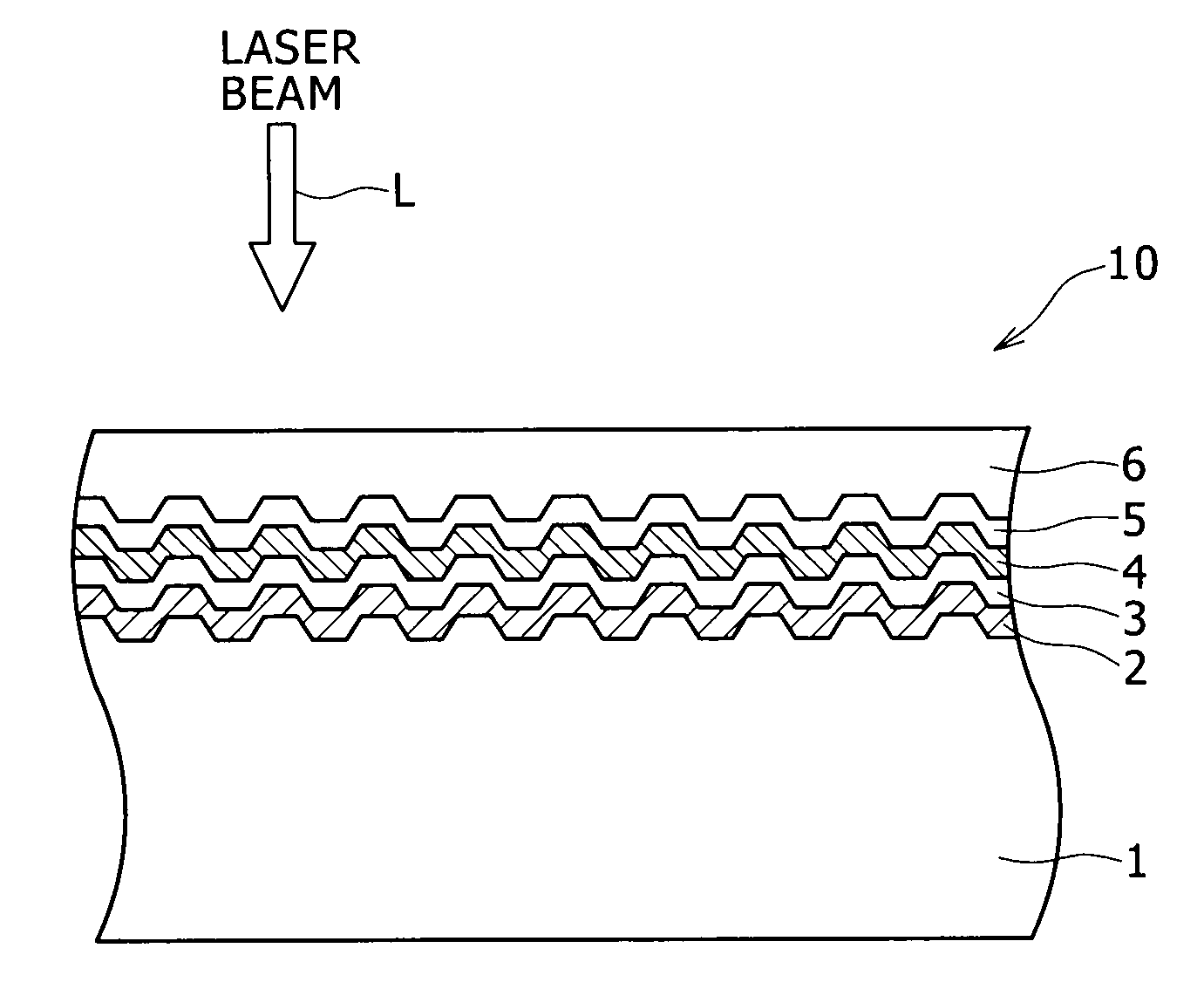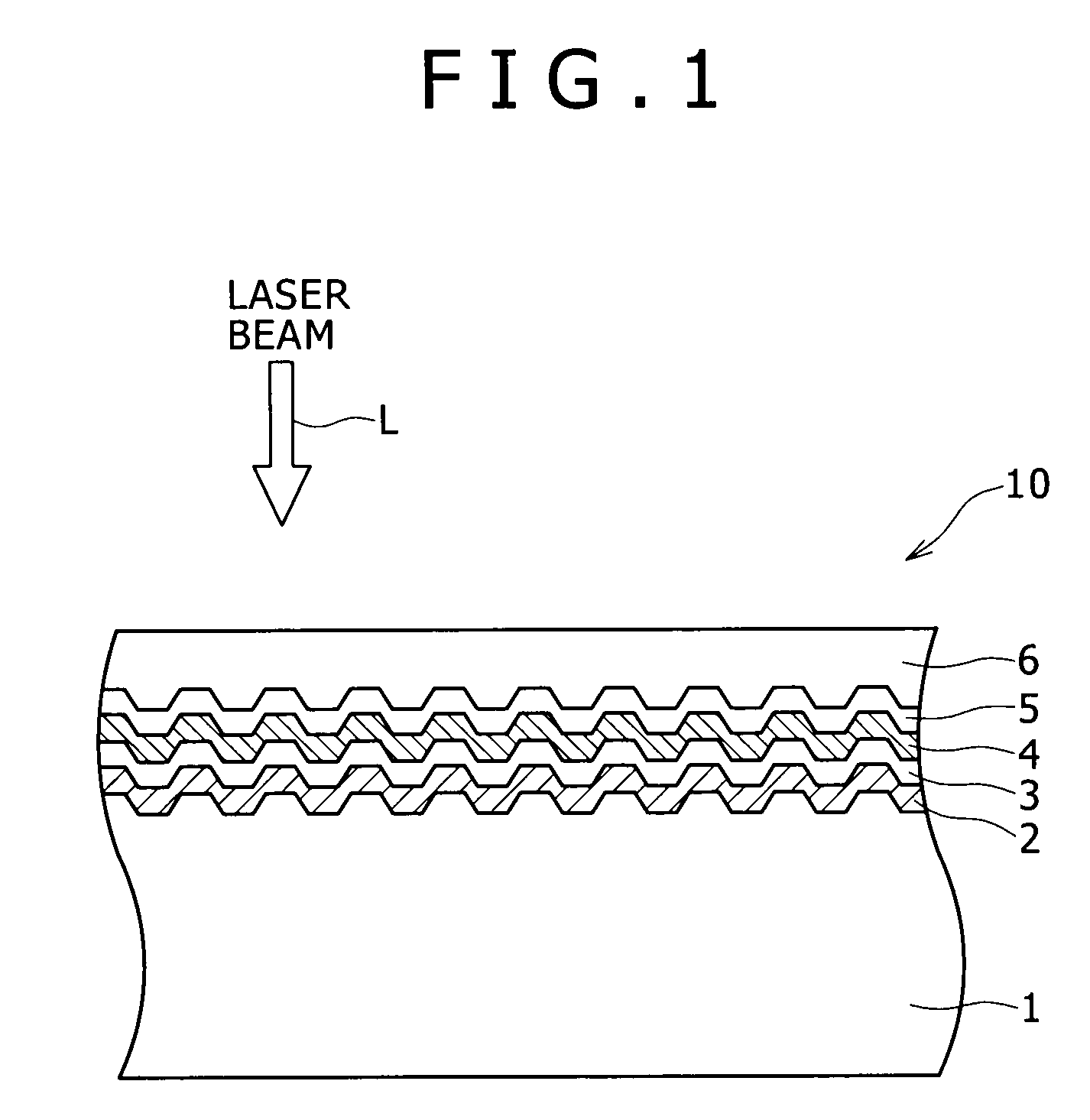Recording layer for optical information recording medium, optical information recording medium, and sputtering target for optical information recording medium
a technology of optical information and recording medium, which is applied in the field of optical information storage media recording layers and sputtering targets, and recording layers for can solve the problems of low c/n ratio of optical storage media, low corrosion resistance of optical information storage media, and gradual deterioration of metallic recording layers in writing and reading properties for a longer time period, etc., to suppress the oxidation of the recording layer and improve corrosion resistance. , the effect of low melting poin
- Summary
- Abstract
- Description
- Claims
- Application Information
AI Technical Summary
Benefits of technology
Problems solved by technology
Method used
Image
Examples
experimental example 1
[0212]Experimental Example 1 relates to recording layers for optical information storage media according to the first embodiment of the present invention.
[0213]Preparation Example of Samples
[0214]Samples of various thin films of tin-based alloys including Sn—Nd alloy thin films, Sn—Gd alloy thin films, and Sn—La alloy thin films shown in Table 1 were deposited in the following manner, and these were examined for the initial reflectivity, creation of recording marks, and durability. For comparison, a pure tin thin film was deposited and was examined for the properties in the same way.
[0215]Deposition of Tin-based Alloy Thin Films and Pure Tin Thin Film
[0216]Each of a pure tin thin film and a series of thin films of tin-based alloys was deposited on a transparent polycarbonate substrate having a thickness of 0.6 mm and a diameter of 120 mm using a pure tin sputtering target. The thin films of tin-based alloys were deposited using a composited sputtering target with chips of alloy elem...
experimental example 2
[0242]Experimental Example 2 relates to recording layers for optical information storage media according to the second embodiment of the present invention.
[0243]Preparation Example of Samples
[0244]Samples of various thin films of tin-based alloys including Sn—B alloy thin films, Sn—B—Y alloy thin films, and Sn—B—In alloy thin films shown in Table 2 were deposited in the following manner, and these were examined for the initial reflectivity, creativity of recording marks, durability, surface roughness Ra, and media noise. For comparison, a pure tin thin film was deposited and was examined for the properties in the same way.
[0245]Deposition of Tin-based Alloy Thin Films and Pure Tin Thin Film
[0246]Each of a pure tin thin film and a series of thin films of tin-based alloys was deposited on a transparent polycarbonate substrate having a thickness of 0.6 mm and a diameter of 120 mm using a pure tin sputtering target. The thin films of tin-based alloys were deposited using a composited sp...
experimental examples 3 to 5
[0284]Experimental Examples 3 to 5 below relate to recording layers for optical information storage media according to the third embodiment of the present invention.
PUM
| Property | Measurement | Unit |
|---|---|---|
| Thickness | aaaaa | aaaaa |
| Thickness | aaaaa | aaaaa |
| Thickness | aaaaa | aaaaa |
Abstract
Description
Claims
Application Information
 Login to View More
Login to View More - R&D
- Intellectual Property
- Life Sciences
- Materials
- Tech Scout
- Unparalleled Data Quality
- Higher Quality Content
- 60% Fewer Hallucinations
Browse by: Latest US Patents, China's latest patents, Technical Efficacy Thesaurus, Application Domain, Technology Topic, Popular Technical Reports.
© 2025 PatSnap. All rights reserved.Legal|Privacy policy|Modern Slavery Act Transparency Statement|Sitemap|About US| Contact US: help@patsnap.com



